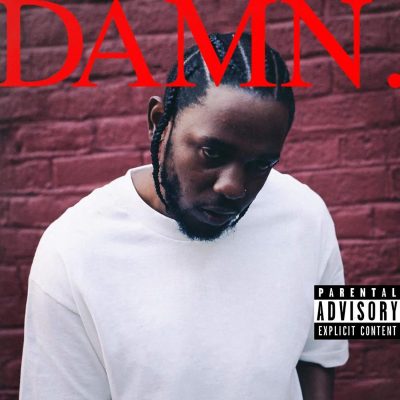
Kendrick Lamar, one of the most creative minds in music today, continues to change the genre of hip-hop with his fourth studio album, “DAMN.” The album is a creative, abstract and deeply personal project that continues his already impressive resume of critical and commercial successes.
Lamar released his first studio album, “Section.80,” in 2011, then rose to stardom with 2012’s “good kid, m.A.A.d city,” Lamar’s musical memoir about growing up in Compton, California. In 2015, he released the genre-bending, politically-charged “To Pimp a Butterfly,” one of the most critically acclaimed rap albums of the decade.
Lamar is known for creating cohesive concept albums that push the boundaries of hip-hop with their unique production, creative lyrics and themes that connect to society and transcend music itself.
His fourth album, “DAMN.,” is no different.
By choosing a unique concept for each album, it makes it very difficult to compare Lamar’s albums to one another because each is so different.
Unlike “To Pimp a Butterfly,” whose sound was a cohesive blend of hip-hop, jazz, soul and funk music, “DAMN.” has no singular sound, but rather a collection of different, experimental beats that will often switch mid-track to something completely different.
This works to the album’s favor, enabling Lamar to use his skills as an MC to adopt different voices when he raps and also concoct outlandish flows that change as each song progresses.
Look for this versatility in the first few songs on the album, where Lamar spits aggressive, spiteful bars on “DNA.,” perhaps his hardest, grimiest song since “The Blacker the Berry,” then flawlessly transitions to a sleepy, silky flow over a dreamy and laid-back beat on “YAH.”
He will even switch his voice and cadence mid-song, such as on “FEEL.,” where he not only switches his flow multiple times over the same beat but also changes from his normal rap voice to a hyper-aggressive, screaming tone and back again with no issue.
Perhaps “DAMN.” does not seem as conceptual or cohesive as his previous two albums because there is no larger narrative as there was on “good kid, m.A.A.d. city,” or a poem interwoven between songs such as “To Pimp a Butterfly,” but a closer listen will reveal that “DAMN.” does have a distinct and unique concept.
The introspective concept being Lamar coming to terms with his mortality and who he is as a person, which he artfully weaves throughout the album.
On the very first track, Lamar tells a story about being murdered by a woman on the street, then the album ends with him hypothetically dying again in a gunfight, then rewinding back the entire album to conclude on the first words of the first track. This full circle ending makes “DAMN.” seem as if Lamar’s life is flashing before his eyes, and in that moment he takes time to examine who he is as a human.
The one-word names of each track, often representing abstract concepts such as loyalty, love and fear add to this idea as Lamar examines the different traits that make him who he is. The introspective nature of his lyrics makes the listener believe that they are getting an inside look at Lamar’s deeply personal thoughts as if he had created a musical diary.
Lamar is no stranger to sharing his emotions, as he touched on themes of depression and suicide on “To Pimp a Butterfly,” yet the songs on “DAMN.” give a more holistic view of who Lamar is as a person.
For example, Lamar creates a dichotomy of himself between tracks, when he wraps about loss, guilt and his damaged ego over a slow, mopey beat on “PRIDE.,” then immediately follows with the song “HUMBLE.,” an energetic, braggadocios track where Lamar tells his critics to sit down, be humble and respect him.
While the album is not as political as “To Pimp a Butterfly,” Lamar always takes time to criticize the state of race relations in the country.
He speaks about his blackness on the edgy cut “DNA.” and further criticizes America and society on the track “XXX.,” a beautiful, unruly mess of sound which features a surprise appearance from U2, as Bono sings the closing lines to perhaps the best song on the entire album.
Lamar flaunts his excellent storytelling on the final track “DUCKWORTH.,” where he tells the tale of Anthony Tiffith, the founder of the record label Lamar is signed to, and how he spared the life of Lamar’s father when he robbed a restaurant nearly 20 years ago.
This true story brings the theme of Lamar’s mortality to a close, as Lamar suggests that if things had gone differently, he would have grown up without a father and would not be in the same position he is today.
“DAMN.” is a unique work of art that showcases Lamar’s boldness, artistry and creativity, leaving the listener at a loss for words save for the same blood red, four-letter, all-caps word that is plastered on the album cover.















Jonathan your writing is amazing, hope your Grandmother gets to read this.
#JamesHardenMVP